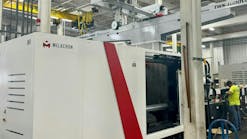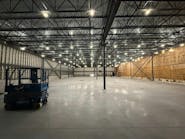Kuhne process yields recyclable film with oxygen barrier for thermoforming
Kuhne has developed a method for producing what it calls sustainable thermoforming films with an oxygen barrier on its Triple Bubble blown film lines.
The biaxially oriented PP (BOPP) films can be used for packaging foods such as bread, meat and cheese, and are considered fully recyclable, the company said.
“You wouldn’t think those [BOPP] films are thermoformable, but there is a way using the Triple Bubble process of making biaxially oriented film thermoformable, and if you want to, you could also make it thermoformable and shrinkable at the same time,” said Adolfo Edgar, Kuhne’s VP of blown film systems in the U.S. and Canada. “When you talk about thermoformable films, obviously, the most widely used process is cast film.”
One of the major benefits of multilayer films produced on the Triple Bubble blown film lines is their thickness, which is about 50 percent less than that of conventional cast films, the company said.
Kuhne Anlagenbau GmbH developed the production method through extensive tests using a 13-layer Triple Bubble system at its in-house R&D center in St. Augustine, Germany.
Kuhne has succeeded in producing films that are only 3.15 mil thick, compared to cast films measuring 6 mils to 7 mils, Managing Director Jürgen Schiffmann said. “This represents a dramatic thickness reduction of roughly 50 percent.”
Schiffmann described the development as the first big step on the path to more environmentally friendly thermoformable films.
Triple Bubble films offer better mechanical properties and thermoform better than comparable cast films, according to feedback Kuhne received from European food companies that have adopted the technology, Schiffmann said.
The blown film is abruptly water-quenched in the first bubble, which give the film a low degree of crystallinity, the company said. Biaxial stretching, which takes place in the second bubble, improves the barrier properties significantly. Finally, the relaxation and fixation that the film undergoes in the third bubble, also known as the annealing bubble, are important for deep-drawability.
In this third step, the now-biaxially oriented film is inflated at a lower pressure and then reheated with infrared heaters. This process, also known as thermofixation, stabilizes the film structure and determines the amount of shrinkage possible in the final product, according to Kuhne.
The Triple Bubble films for thermoforming applications that are already on the market are typically nine-layer structures with ethylene vinyl alcohol (EVOH) and polyamide (nylon) barrier layers and are not considered recyclable.
However, Kuhne, working with a European film manufacturer, developed a five-layer PP-based film that is recyclable. It consists of 95 percent PP with only 5 percent EVOH as an oxygen barrier. Because the level of EVOH is so low, the film is recyclable, Kuhne said.
“Traditional [thermoformable barrier film] structures will normally have a high percentage of nylon, 30 percent to 40 percent, plus EVOH,” Edgar said. “In the case of sustainable films, you cannot have nylon in there. You want mostly just PP or PE.”
The high nylon content only applies to deep-draw films, Edgar added. Non-thermoformable barrier films will also have nylon but in lesser percentages, maybe 15 percent to 20 percent.
Kuhne’s technology for producing so-called “mono-material” polyolefin films with a 5 percent EVOH barrier layer is not limited to thermoforming.
Non-thermoforming applications can involve production of either BOPP or BOPE films. The biaxially oriented stretching, along with 5 percent EVOH content, imparts the same barrier properties, the company said. Other applications include stand-up pouches, coffee and snack packaging, and lid films for food packaging.
Kuhne developed the processes to meet demands for more sustainable packaging.
“There is a big push for sustainable films,” Edgar said. “For the last couple of years, we have been doing a lot of work in the Triple Bubble lines to develop what are called sustainable barrier films, and the Triple Bubble process is ideal for this.”
Contact:
Kuhne USA, London, Ontario, 416-700-7444, https://kuhne-ab.de/en
Bruce Geiselman | Senior Staff Reporter
Senior Staff Reporter Bruce Geiselman covers extrusion, blow molding, additive manufacturing, automation and end markets including automotive and packaging. He also writes features, including In Other Words and Problem Solved, for Plastics Machinery & Manufacturing, Plastics Recycling and The Journal of Blow Molding. He has extensive experience in daily and magazine journalism.






